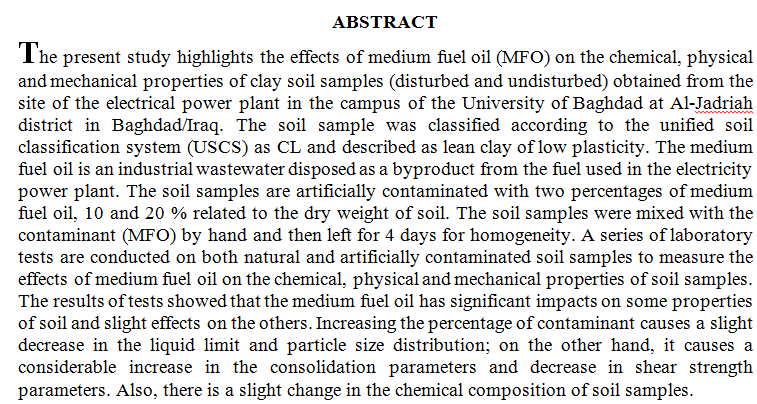
Pollutants generation is strongly dependant on the firing temperature and reaction rates of the gaseous reactants in the gas turbine combustion chamber. An experimental study is conducted on a two-shaft T200D micro-gas turbine engine in order to evaluate the impact of injecting ethanol directly into the compressor inlet air on the exhaust emissions. The study is carried out in constant speed and constant load engine tests. Generally, the results showed that when ethanol was added in a concentration of 20% by volume of fuel flow; NOx emission was reduced by the half, while CO and UHC emissions were almost doubled with respect to their levels when burning conventional LPG fuel alone.
The present study included the physico-chemical parameters of Lesser-Zab river and its effects on Tigris river. Monthly water samples were taken from the two rivers during January to October 1999.There were no signifcant difference in water temperatures. Both rivers were fresh to oligohalin, alkaline and very hard. Close values were determined in total suspended solids in both rivers with little increasing during rainfall period and high discharge. Water was well areated and over saturation was recorded in several occasions. Dissolved oxygen values of Tigris river were influenced by Lesser-Zab. Cations were more dominant than anions in both rivers. In Lesser-Zab, the anions were increased during spring season and declined in summer which t
... Show MoreThis experimental study focuses on scouring in box culvert inlets under steady-state conditions and at different percentages of blockage ranging from 0% to 65%, and also looks at the hydraulics of water in the culvert. The investigation shows that the blockage of the culverts has influenced the scouring pattern at the blocked culverts' entrances. Ten experiments were carried out at the laboratory to see how blockage impacts the scouring pattern upstream of a box culvert during steady flow. Both partially blocked and unblocked cases were implemented in this study. The experimental tests were done until the equilibrium scour occurred, which took about 3.5 hours of water flow to reach equilibrium conditions. The results r
... Show More (2)
(2)
 (25)
(25)
Due to the energy crisis and the stringent environmental regulations, diesel engines are offering good hope for automotive vehicles. However, a lot of work is needed to reduce the diesel exhaust emissions and give the way for full utilization of the diesel fuel’s excellent characteristics.
A kind of cetane number improver has been proposed and tested to be used with diesel fuel as ameans of reducing exhaust emissions. The addition of (2-ethylhexyl nitrate) was designed to raise fuel cetane number to three stages, 50, 52 and 55 compared to the used conventional diesel fuel whose CN was 48.5. The addition of CN improver results in the decre
... Show MoreAn experiment was carried out to study the effects of Time Factor, potassium and Molybdenum on Rhizobium growth. The objective of the experiment, which conducted under laboratory conditions, was to investigate the interaction effects of using three levels of Molybdenum (0, 0.25, 2.50 mg Mo . Kg-1 sterile soil) and four levels of potassium (0, 25, 50, 100 mg K . Kg-1 sterile soil) on the viable counts of Rhizobium growth in the sterile soil after 3, 9, 15 and 21 days of incubation at 28°C. The results indicated that Molybdenum level 2.50 mg Mo . Kg-1 sterile soil and potassium level 50 mg K . Kg-1 sterile soil recorded the biggest significant increase in the viable counts of Rhizobium growth in the sterile soil especially after 15 da
... Show MoreThe aim of this research is to study the influence of additives on the properties of soap greases, such as lithium, calcium, sodium, lithium-calcium grease, by adding varies additives, such as graphite, molybdenum disulfide, carbon black, corrosion inhibitor, and extreme pressure.
These additives have been added to grease to obtain the best percentages that improve the properties of grease such as load carrying, wear resistance, corrosion resistance, drop point, and penetration.
The results showed the best weight percentages to all types of grease which give good properties are 1.5% extreme pressure additive, 3% graphite, 1% molybdenum disulfide, 2.5% carbon black.
The other hand, the best weight percentage for corrosion inhibit
 (8)
(8)
 (6)
(6)

